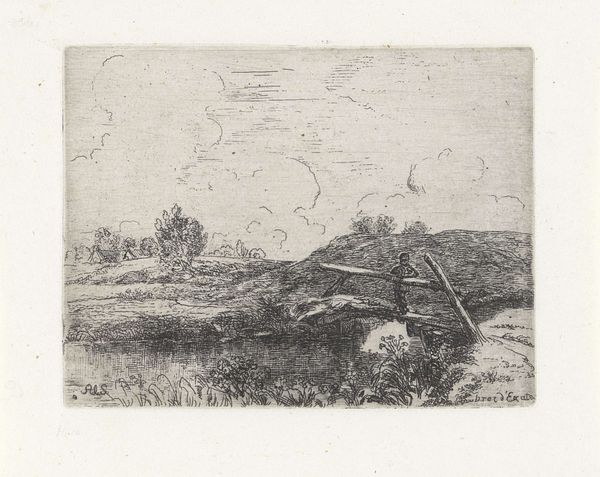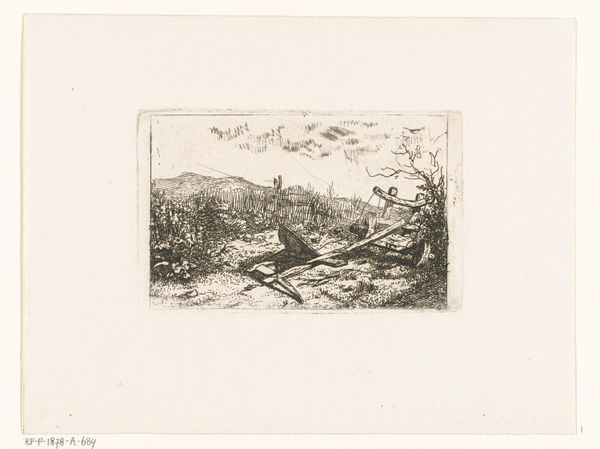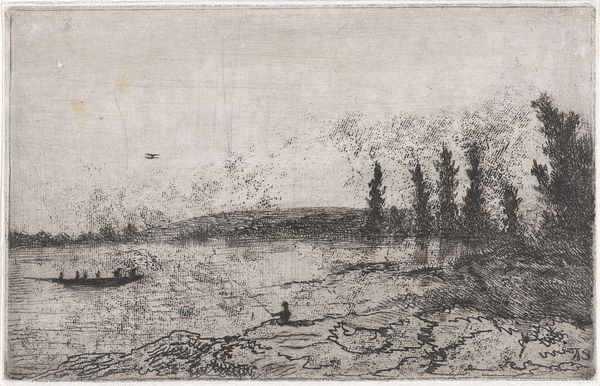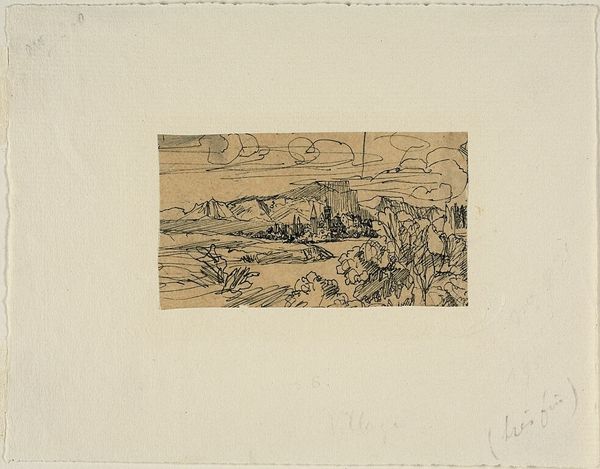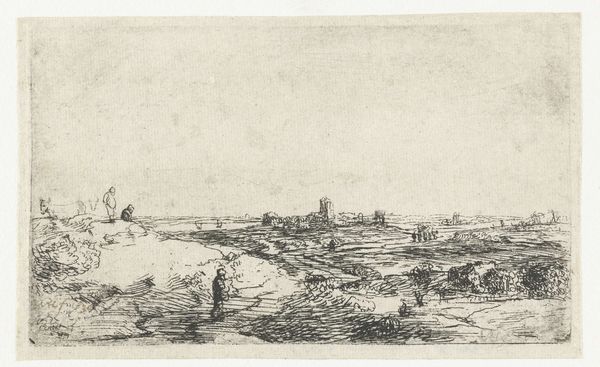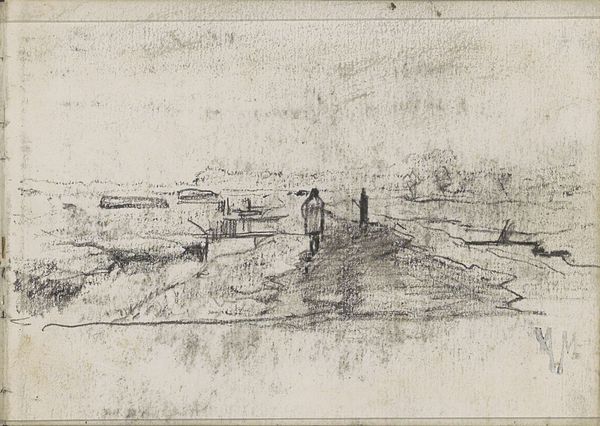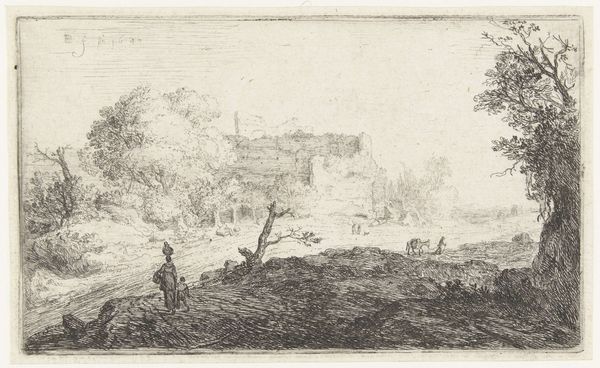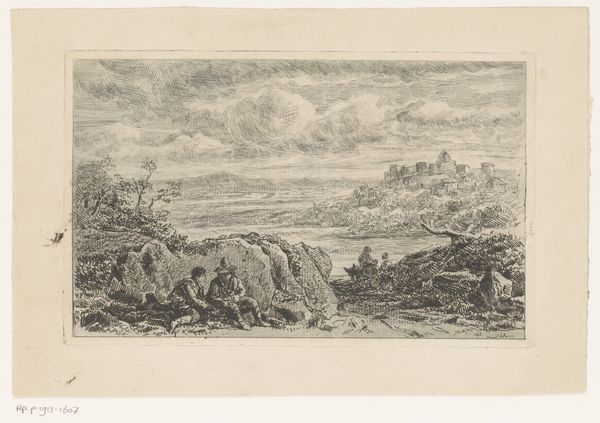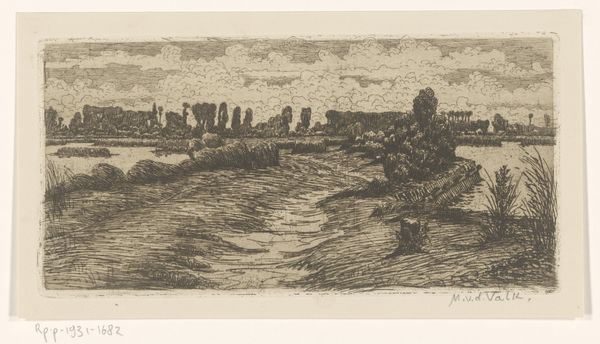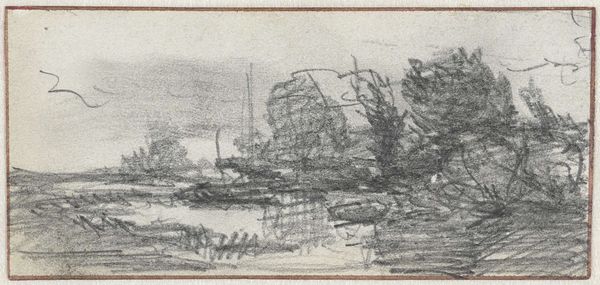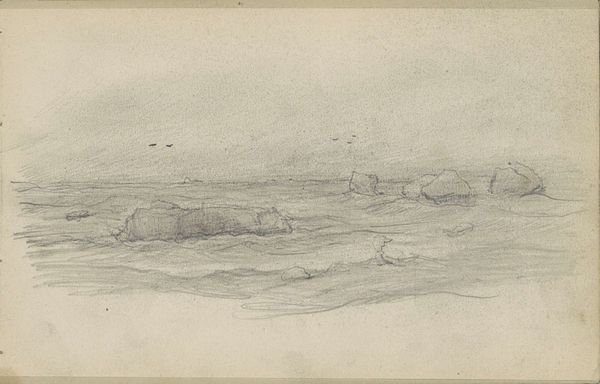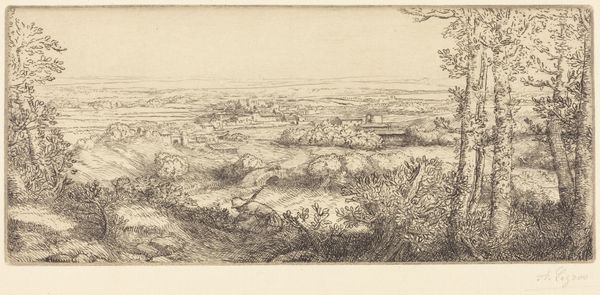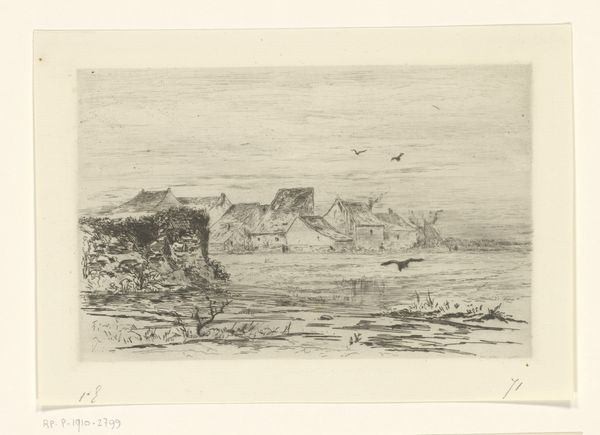
Dimensions: height 132 mm, width 202 mm
Copyright: Rijks Museum: Open Domain
This is Alexander Schaepkens' etching of the Fountain of Saint Servatius in Maastricht. Without a date, we can assume it was made sometime in the mid-19th century. It depicts a famous local landmark, the spring associated with the city's patron saint, known for its healing properties. The etching presents an idealized view of this natural site, emphasizing its tranquility and historical significance. Schaepkens, living in a time of growing national consciousness and institutionalization of culture, likely aimed to celebrate local heritage through his art. The choice of etching, a printmaking technique, suggests a desire to make this image accessible to a wider audience, fitting in with the era's burgeoning interest in documenting and sharing cultural landmarks. To truly understand the art's role, we might delve into local archives, explore the development of tourism in Maastricht, and examine the cultural politics of the era. The meaning of this image lies in the social and institutional context in which it was made and circulated.
Comments
No comments
Be the first to comment and join the conversation on the ultimate creative platform.
